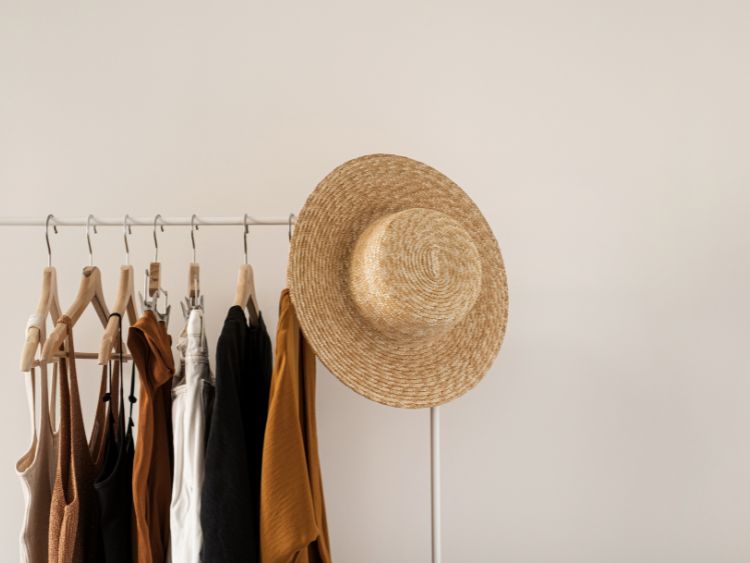Fashion is more than just clothing; it’s a way of expressing identity, culture, and creativity. From the runway to the streets, fashion impacts every aspect of our daily lives, and its influence transcends borders. In this article, we’ll dive into the world of fashion, exploring its history, trends, and its role in shaping modern culture. Whether you’re a fashion enthusiast or just curious about the industry, this guide will provide a comprehensive look into the dynamic and ever-evolving world of fashion.
The Evolution of Fashion
Fashion has always been a reflection of the times. The clothes we wear, the fabrics we use, and even the way we style our hair have been shaped by historical events, technological advances, and social movements. From the flowing togas of ancient Greece to the haute couture of Parisian runways, fashion has continually reinvented itself.
- Ancient Civilizations: Fashion in ancient times was heavily influenced by the resources available and the climate. In Egypt, linen was the fabric of choice, and gold jewelry symbolized wealth. Meanwhile, in ancient Rome, fashion became a way to display status, with togas and tunics differentiating classes.
- The Renaissance: The 14th to 17th centuries saw an explosion of creativity, and fashion was no exception. The Renaissance brought elaborate fabrics, intricate designs, and a focus on individualism. Fashion during this time was often extravagant, with men and women wearing luxurious garments to showcase their wealth and power.
- The 20th Century: This century marked a turning point in fashion. With the rise of industrialization, fashion became more accessible to the masses. The roaring ’20s brought about flapper dresses, while the ’60s introduced bold patterns and psychedelic colors. The ’80s were all about excess with shoulder pads and neon, while the ’90s embraced minimalism and grunge.
Modern Fashion Trends: What’s Hot Right Now?
Fashion trends may come and go, but certain styles stick around, leaving a lasting impact. Today’s fashion world is more diverse and inclusive than ever before, celebrating individuality and breaking down traditional gender norms. So, what are the current trends that are dominating the fashion scene?
- Sustainability: One of the most significant shifts in recent years has been the rise of sustainable fashion. With increasing awareness of environmental issues, more consumers are looking for eco-friendly clothing options, from organic fabrics to ethically produced garments. Fast fashion is being replaced by slow fashion, which emphasizes quality and longevity over quantity.
- Athleisure: Combining comfort with style, athleisure has become a staple in modern wardrobes. Gone are the days when gym clothes were reserved for workouts. Now, people are rocking leggings, hoodies, and sneakers in their everyday lives, blending fashion with function.
- Gender-Fluid Fashion: Gender-fluid fashion is breaking the mold of traditional menswear and womenswear. Designers are creating collections that defy gender norms, offering pieces that can be worn by anyone, regardless of identity. This trend is more than just clothing; it’s a statement about breaking down societal barriers.
- Vintage Revival: Everything old is new again! From ‘90s streetwear to ‘70s bohemian styles, vintage fashion is making a huge comeback. Many consumers are looking to second-hand stores and thrift shops for unique pieces that not only look great but also reduce waste.
How Fashion Reflects Society
Fashion is often a mirror of societal values and cultural shifts. For instance, during times of economic hardship, such as the Great Depression, fashion became more practical and understated. In contrast, during periods of prosperity, like the post-war 1950s, fashion exploded with bold colors and extravagant designs.
Fashion also plays a significant role in political movements. The black beret worn by civil rights activists in the ’60s or the punk styles of the ’80s were not just fashion statements—they were symbols of rebellion and identity.
Moreover, fashion has become a platform for promoting diversity and inclusion. Many designers and brands are now embracing models of all sizes, races, and genders, reflecting a broader acceptance of beauty standards.
Iconic Fashion Designers: Shaping the Industry
Behind every iconic fashion trend, there is a visionary designer. These fashion moguls have left an indelible mark on the industry, shaping how we view style today.
- Coco Chanel: Chanel revolutionized women’s fashion by introducing a style that was both comfortable and elegant. Her little black dress, tweed jackets, and quilted handbags remain timeless staples.
- Yves Saint Laurent: Known for pushing the boundaries of fashion, Saint Laurent’s introduction of the tuxedo suit for women in 1966 was groundbreaking. He championed the idea that women could be both feminine and powerful in their clothing.
- Alexander McQueen: Known for his theatrical runway shows and avant-garde designs, McQueen brought art into fashion. His bold creations challenged conventional ideas of beauty, making him one of the most influential designers of the 21st century.
Tips for Staying Fashionable on a Budget
Want to look stylish without breaking the bank? Here are a few tips to help you stay trendy without draining your wallet:
- Thrift Shopping: Thrift stores and second-hand shops are treasure troves for unique fashion finds. Not only can you discover vintage gems, but you’re also contributing to a more sustainable fashion industry.
- Capsule Wardrobe: Build a capsule wardrobe with versatile pieces that can be mixed and matched. A few key items like a tailored blazer, a pair of classic jeans, and a little black dress can go a long way.
- DIY Fashion: Customize your clothing! Adding patches, embroidery, or even cutting your jeans into shorts can give your wardrobe a fresh look without spending a dime.
- Shop Off-Season: Purchasing clothes at the end of a season can save you a lot of money. Stores often have significant discounts on items they need to clear out to make room for new stock.
FAQs About Fashion
Q: What is fast fashion?
Fast fashion refers to inexpensive clothing produced rapidly by mass-market retailers in response to the latest trends. While it offers affordable options, fast fashion is often criticized for its environmental impact and poor labor practices.
Q: How can I be more eco-friendly with my fashion choices?
You can support sustainable fashion by choosing eco-friendly materials, buying from ethical brands, shopping second-hand, and investing in quality pieces that last longer.
Q: What’s the difference between haute couture and ready-to-wear?
Haute couture refers to custom-fitted, handmade clothing that is usually expensive and exclusive. Ready-to-wear (or prêt-à-porter) clothing is mass-produced in standard sizes and available to the general public.
Q: Why is fashion important?
Fashion is important because it is a form of self-expression. It allows individuals to showcase their identity, culture, and values while also reflecting the society they live in.
Conclusion: The Ever-Changing World of Fashion
Fashion is not just about looking good; it’s about making a statement, pushing boundaries, and reflecting the world around us. Whether you’re drawn to the latest trends or prefer timeless classics, fashion is an integral part of human culture that will continue to evolve. From sustainability to inclusivity, the future of fashion looks bright and bold, with endless possibilities for innovation and expression.







